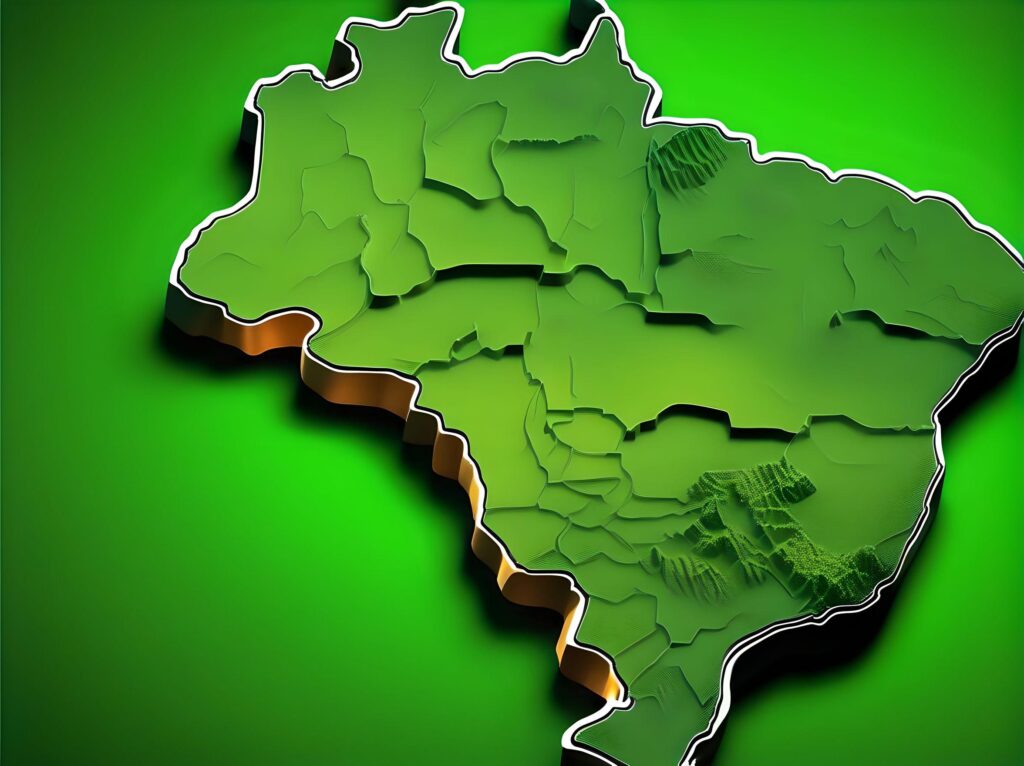Brazil, the largest nation in South America, boasts an incredibly diverse landscape. Its 26 states and one federal district encompass everything from the steamy jungles of the Amazon rainforest to the sun-drenched beaches of the Atlantic coast, rugged mountains, and fertile plains. Understanding this topographical tapestry is key to appreciating the rich economic and cultural tapestry woven within its borders.
The Economic Mainstays
Brazil’s economic engine is fueled by a potent mix of industries. The Southeast region stands out, with São Paulo state leading the charge. Here, industry reigns supreme, with manufacturing encompassing automobiles, airplanes, machinery, and a plethora of consumer goods. Rio de Janeiro, also in the Southeast, boasts a robust services sector that thrives on tourism, finance, and commerce.
Moving south, the fertile plains of Rio Grande do Sul become Brazil’s agricultural powerhouse. Here, vast fields yield soybeans, rice, corn, and wheat, feeding the nation and driving exports. Minerals also play a significant role. Minas Gerais in the Southeast is a treasure trove of iron ore, essential for the steel industry, while Bahia in the Northeast boasts extensive diamond reserves. The Amazon, encompassing nine states, is a natural resource treasure chest. Its verdant rainforests hold vast timber reserves, while its subsoil teems with minerals like iron ore, bauxite, and precious metals.

A City for Every Fancy
Brazil’s urban landscape is as diverse as its topography. São Paulo, a sprawling metropolis with a population exceeding 12 million, is the undisputed economic and cultural capital. Rio de Janeiro, with its iconic beaches, Christ the Redeemer statue, and vibrant nightlife, remains a global tourist magnet.
Beyond these giants, each state boasts unique urban centers reflecting its economic character. Belo Horizonte, capital of Minas Gerais, is a center for industry and mining, while Curitiba in Paraná is known for its innovative urban planning and focus on sustainability. Salvador, the capital of Bahia, pulsates with Afro-Brazilian culture and is a major center for tourism and commerce.
Mountains, Jungles, and Everything In Between
Brazil’s topography is as breathtaking as it is varied. The eastern half features the Brazilian Highlands, a series of mountain ranges that stretch from the border with Uruguay all the way northeast. The loftiest peaks, like Pico da Neblina on the border with Venezuela, reach over 3,000 meters.
The Amazon Basin, covering a large part of the north, is the world’s largest rainforest. This dense jungle, crisscrossed by the mighty Amazon River and its tributaries, is a haven for incredible biodiversity. The Pantanal wetlands in the southwest, teeming with wildlife, offer a stark contrast to the arid sertão region in the northeast, characterized by scrubland and mesas. Finally, along the Atlantic coast, long stretches of sandy beaches are backed by low-lying plains.
A Land of Opportunity
Brazil’s diverse states, each with its unique blend of natural resources, economic drivers, and urban centers, paint a picture of a nation brimming with potential. From the industrial might of the Southeast to the agricultural riches of the South and the natural bounty of the Amazon, Brazil’s economic prospects are undeniable. As the country continues to develop, understanding the intricate tapestry woven by its states will be key to its future success.